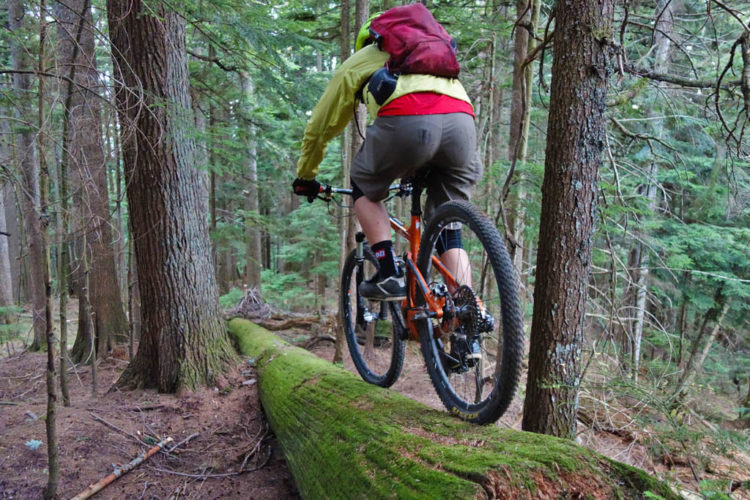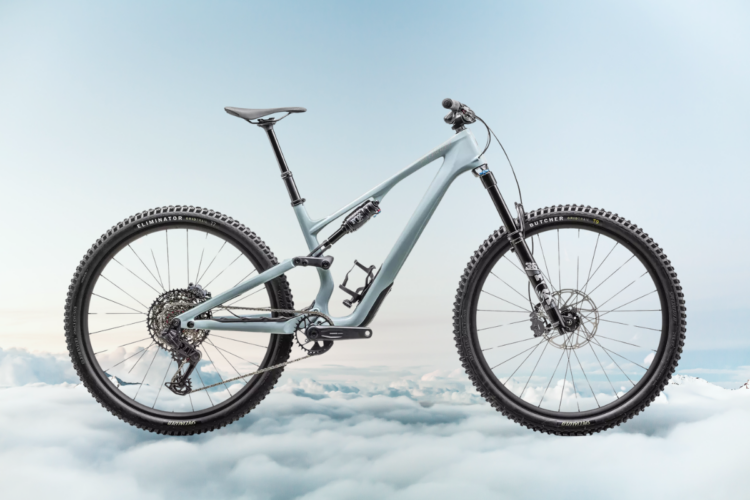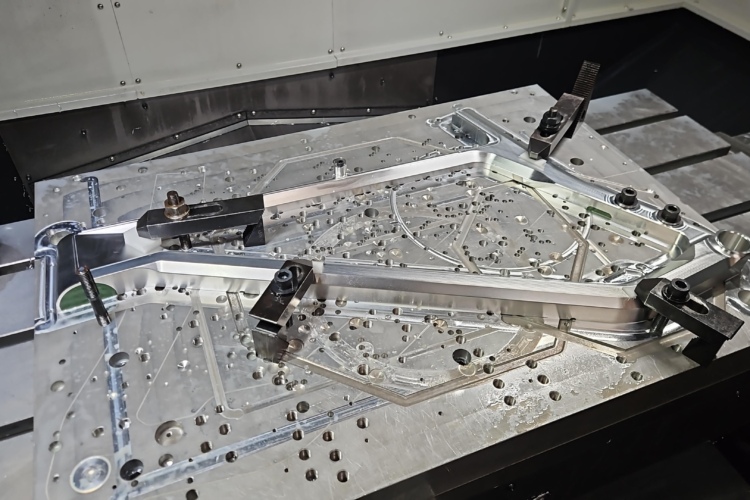The perineum. Among other terms of endearment you and your circle of friends have dubbed it, one thing the surface separating the back door from the bits hasn’t been called is comfortable on a bike. In every other activity of daily living where cheek meets seat we’re in constant search of the plushest arrangement, yet aboard a bike the only thing separating the space between Christmas Day and New Year’s is a thin layer of cowhide exposing one of the most sensitive regions of our body to absolute brutal wear-and-tear.
But we suffer for our art. If biking were easy, it wouldn’t be hard. And if it wasn’t a challenge, it wouldn’t be fun. And if you haven’t suffered from saddle sores, you’re not riding enough. That said, you don’t have to feel like a cheese grater has been taken to your taint after every ride to call yourself legit. So, let’s take a look at some of the most common causes and cures to ameliorate the pain and suffering from saddle soreness.
Swass
When sweat breaks between your bits and bum – a dark, hot, and poorly-ventilated crevasse – it becomes a breeding ground of such funk and filth it makes The Bog of Eternal Stench look like the Emerald City. Because sweat contains sodium, once the water component evaporates, salt crystallizes leaving behind a fine layer of sandpaper that slowly abrades the skin with each turn of the crank. Normal skin bacteria can enter areas of compromised skin and go on to infect hair follicles (folliculitis) and cause bigger problems like abscesses or boils.
Never ride in the same shorts (or whatever second skin layer) twice before washing them. Ideally, you should strip down and give yourself a quick wash as soon as possible. Keeping a pack of baby wipes and sweat pants in the car is handy for longer commutes from the trailhead or when meeting up for post-ride beverages.
Pressure
PRESSURE = FORCE / SURFACE AREA
The perineal pressure is inversely proportional to the saddle’s surface area–I will discuss proper saddle width later. Body weight creates force on the perineum and reducing it will also reduce saddle pressure. Assuming you have little body weight to lose to significantly relieve pressure, causing saddle discomfort, you might try shedding some unnecessaries from your backpack or converting to a frame bag system. Increasing pedal pressure also lightens the load at the saddle, but may necessitate a heavier gear and could cause a subsequent overuse injury in the hip, knee, or foot.

Chamois & Creams
After an embarrassing trip to the Instacare and two mid-summer weeks off the bike, I cannot say enough about the importance of wearing chamois-equipped shorts. For best results, the chamois should fit snug enough to move with your skin, not against it. Too loose a fit and the very thing that is supposed to prevent skin breakdown will cause it. Chamois quality and how they’re incorporated into the shorts varies, but I’ve found that a nice pair of bibs provides superior fit, comfort, and protection.
The effectiveness of creams over a decent saddle and proper bike fit is arguable at best. I’ve had limited success with such embrocations and find it may not be as important in a sport that forces us just as much out of the saddle as it does on it. If you do fancy a lather, don’t get too fancy. You can spend as much as $25 on an elaborate, European, “cycling-specific” tub of rub that’s made with common household items. Try the following:
- 8 oz Vaseline
- 1/2 oz Neosporin
- 1/2 tsp Tea Tree Oil

Fit
Seat height. A saddle set up too high creates unnecessary pressure as you’re forced to reach more for the pedals. This over-reaching may also cause your pelvis to rock to-and-fro, grinding away at your crotch. A seat that is too low takes away the ability of your legs to support your weight, also creating undue undercarriage pressure.
[see_also id=’232258′]
Fore and aft. For some, the saddle’s fore and aft position is important for aligning the knee over the pedal spindle (KOPS), but be careful not to compromise adequate contact between the widest portion of the saddle and your sit bones. KOPS is debatable at best and may be more important in road biking than mountain biking, as the latter requires much more body movement while riding, resulting in built-in posture breaks.

Tilt. Nose down transfers the load from the pubis to the sit bones, but causes a forward slide, forcing you to push back with knees and arms, which consumes energy. A nose up overloads the pubic area and brings the rider into a poor pedaling position. It also ends up being rather uncomfortable for obvious reasons. I’ve found nothing beats a parallel-to-the-ground setting.
Reach. The degree to which you flex at the trunk may be too aggressive, too low, and too “racey.” Without compromising seat height, raise your handlebars and/or shorten your stem to achieve a more upright position. If this isn’t “aero” enough for you just remember, it might be your achy arse that keeps you from the podium and not your inability to slice through air.
Read more on the importance of a bike fit here:
[see_also id=”30732″][/see_also]
Saddle
First, you should try to rule out all of the above causes before purchasing a new saddle. That said, there’s a really good chance a new saddle will pacify your protesting posterior. At the risk of turning this into an exhaustive saddle shootout, I’d rather discuss some basics when selecting a saddle. Keep in mind, there is no cookbook for a perfect saddle and, just like every other component on your bike, you will make a compromise somewhere along the way.
[see_also id=’236127′]
Break it in. If you just bought a new complete bike or if you bought a saddle sight unseen and there’s no return option, give it some break-in time. In most cases, a new saddle will be less than comfortable for the first few rides. How long it takes for the love connection to play out is anyone’s guess, but give it some time before you toss it.
Correct width. As the distance between sit bones varies from person to person, there’s a chance your current saddle is not wide enough to provide support where you need it. Additionally, to avoid excessive width while fine tuning size, the degree to which you flex at the trunk when riding is taken into the equation. The more upright you ride, the more contact made on the ischials, requiring a wider saddle, whereas a more aggressive position moves contact points to the pubic bone, obviating additional width.

To determine the correct width of a new saddle, you need to know your effective saddle width, which takes into account the actual measurement between your ischial tuberosities (somewhere between 10-14 cm) and your riding position. To obtain the measurement between bones, lay a piece of cardboard on a hard, flat surface and sit down firmly, raising both knees to enhance the impression (hint: take two measurements for reliability). Now identify the center of each impression and measure.
EFFECTIVE WIDTH = BASE WIDTH + POSITION FACTOR
The next step adds to the measurement, depending on your riding position. A time trial/triathlon position requires no additional width and therefore adds nothing to the effective measurement, while a complete upright posture will add 4 cm. For mountain biking, you will likely add 2-3 cm to your base measurement. When in doubt, err on the wider size.
- triathlon/time trial: +0cm
- XC racing: +1cm
- moderate: +2cm
- slightly bent: +3cm
- upright: +4cm

Softer is not (always) better. Although it may seem counter intuitive, a softer saddle may actually exacerbate saddle soreness for the same reason a softer mattress isn’t always the most comfortable. Your seat bones push through the plusher material, but now every tissue other than the sit bones, including blood supply and nerves, has to deal with undue pressure from extra saddle stuffing.
Demo. Finally, it is well worth your time and money to demo saddles. Many smart shops have dedicated demo saddles, and even those who don’t may be willing to tear one off the wall or a bike if they know you’re sincere in working with them to find the right saddle.
Check out the top saddles based on Singletracks member reviews here and check out a side-by-side comparison of the best MTB saddles from 2016 here.
As with anything in mountain biking, to get faster, stronger, and more durable, you need to ride… a lot. Ride to know what works and what doesn’t. Ride to understand the problem. Ride to share your fame and failures with others. You may find that by simply increasing your time in the saddle you can condition your rear and avoid the violating effects of saddle sores.












8 Comments
Dec 15, 2016
Dec 13, 2016
Dec 13, 2016
Dec 13, 2016
Dec 13, 2016
Jul 29, 2018
Dec 13, 2016
Dec 13, 2016